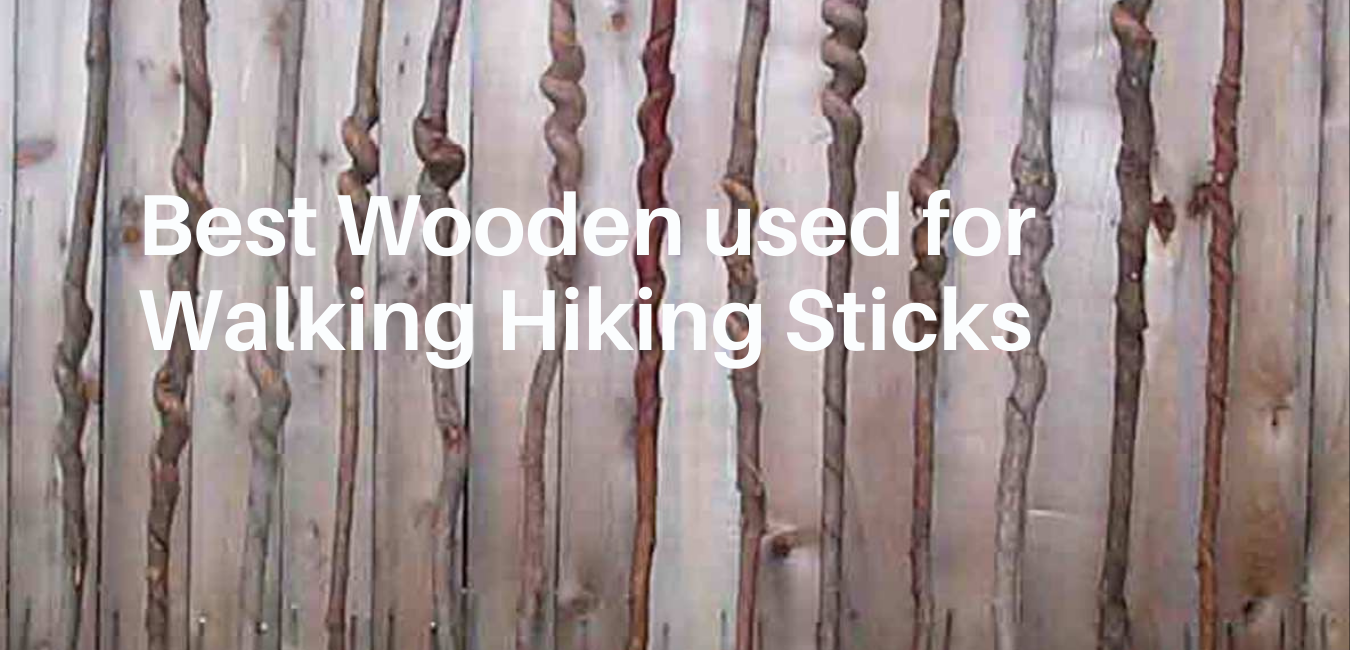Best Wooden used for Walking Hiking Sticks

What makes a walking stick strong as an ox when individuals shift their prose, especially in the upper back? Which wood is utilized for walking cane that picks up all of the strength of strained joints? Is it the Oak, chestnut, hazel, blackthorn or birch that we tend to rest our exhausted balance while trailing mountains and complicated pathways? What is the best wooden used for walking hiking sticks?
Those experts in making canes or walking sticks are self-aware that picking up wood and turning the tables to walking sticks isn’t rocket science. It consumes time, dedication, and sweet labour sweat to alter the natural wood into a walking aid. Plus, crafting a walking aid into something trendy, fashionable and scientifically proven traction (like dynamo cyclone walking cane) savours an additional span.
First, a blank- an unbending natural stick inherited from the forest is accumulated and preserved for an extended period by extracting its moisture. As discussed above, a blank is coined from the Oak, chestnut, hazel, blackthorn or birch. A blank is undeniably a straight and erect stick. It’s also possible to straighten a naturally curve blank on a lathe. However, a walking cane or stick manufacturer looks out for an unbending blank, which is an unchallenging and untroubled task. What’s the best wooden used for walking or hiking sticks?
Is oak wood the best wooden used for walking hiking sticks?

As a bestselling author, Oak is one of the proudest wood among the walking cane crafters. It is the hardest and robust wood, known for its durability. Preserved for lone years in a cool dark place, blanks deviated from Oak becomes vigorous when altered into a walking cane. At the same time, crafters chose to crave their artistic outburst in an oak wood because it results in beautiful hand-carved designs and fine details. Well, it depends on crafters-some of them are easy-gong with softwood than hardwood too.
Chestnut Wood

A chestnut blank can be transformed into a durable as well as a lightweight walking stick. Its sturdy nature makes it one of the best wooden available for walking/hiking sticks. It is less dense wood which can be developed into a hiking stave, the curved handle of a cane, coppice knob stick, and a thumbstick. The latter-thumb stick is popular among trekkers and hikers because it aids in travelling lengthy pathways while resting their thumb in a ‘V shape wedge.
The best wooden used for walking hiking stick: Hazel Wood

The hazel tree holds an amusing tale- as per the traditional saying, it shoos away evil spirits. In some parts of England, it is believed that hazel repels rheumatism. Thus, most people pick hazel walking cane, believing that it would lessen their pain in the joints, muscles, and bones. Also, it is on the top-notch list of crafters because of its excellent texture and shimmering colour. Due to its peculiar texture, it possesses dark brown or silver coloured bark.
Blackthorn Wood

Though it is not a giant tree, a walking stick made out of it is sturdy and rich in texture. It is also equally responsive to coppicing, which doesn’t hold back its growth when cut back to stumps. The blackthorn wood’s hometown is in the US, where it grows into a beautiful dark brown textured shaft. It’s the reason that walking cane or hiking stick deviated of blackthorn wood has bewitching colours and texture. At the same time, the blackthorn tree retains a traditional tale, which says the tree has been the shelter of Leprechauns and the patron saint of Ireland, Saint Patrick. Hence, blackthorn wood is one of the best picks because of its rich texture and ancestral beliefs.
Beech Wood

The beech wood is sturdy enough to protect itself from wear and tear caused by machinery corrosion and high temperature. In the same manner, though it isn’t rich in colour, its pale shade can be coated with a lavish texture. What’s more, needed for a walking cane if it is composed of robust wood and fine texture like Beechwood? Nonetheless, it’s a hardworking job among crafter who cut off planks from the beech tree, transforms planks into batons and placed them on a lathe to make the round shaft. Well, Beechwood is much more than a survivor-it doesn’t easily collapse, while other baton woods can readily tear to shreds